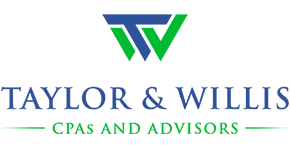Cost Segregation: Is This Strategy for You?
One significant tax benefit of owning residential rental property or non-residential commercial or investment property is depreciation—a deduction you get without spending any additional money.
But regular depreciation for real property is slow. Residential rental property is depreciated over 27.5 years and non-residential property over 39 years, providing a relatively small deduction each year.
Fortunately, there is a way you can speed up your depreciation deductions—especially during the first year or years you own the property: cost segregation.
“Cost segregation” is the technical term for separately depreciating the elements of property that are not real property. These are elements other than land, buildings, and building components. They include
- improvements made to the land, such as landscaping, swimming pools, paved parking areas, and fences; and
- personal property items inside a building that are not building components—for example, refrigerators, stoves, dishwashers, and carpeting in residential rentals.
Using cost segregation does not increase a property owner’s total depreciation deductions, but it does accelerate them over the first few years because personal property has a five- or seven-year depreciation period and land improvements a 15-year period.
In addition, by using bonus depreciation and/or Section 179 expensing, owners can deduct all or most of the cost of personal property and land improvements the first year they own the property—providing a potentially enormous first-year deduction.
A cost segregation study must be conducted to identify which building elements are personal property and land improvements and then to determine their depreciable basis. Studies can be conducted by engineers or done more cheaply with other methods that the IRS views as less reliable.
Cost segregation may not be advisable for every property owner—for example, where it results in a loss that can’t be deducted due to the passive loss rules, or where the owner intends to sell the property within a few years and has to recapture as ordinary income the cost-segregated depreciation deductions.
The best time to perform a cost segregation study is the same year you buy, build, or remodel your real property. But you can wait until a future year—perhaps when you have enough rental or other passive income to use the speeded-up depreciation deductions.
Tax Implications of Shutting Down a Sole Proprietorship
As you consider shutting down your sole proprietorship or your single-member LLC treated as a sole proprietorship for tax purposes, it’s crucial to understand the tax implications of this decision. Here’s an overview of key points you need to consider.
1. Asset Sale Tax Implications
When you sell a sole proprietorship, you sell its assets, not the company. Federal tax rules tell you how to allocate the total sale price to specific business assets. This allocation is critical as it impacts the calculation of taxable gain and loss.
2. Taxable Gain and Loss
- Gain. You have a taxable gain if the allocated sale price exceeds the asset’s tax basis (original cost plus improvements minus depreciation/amortization).
- Loss. You incur a deductible loss if the tax basis exceeds the sale price.
3. Special Rules for Depreciable Real Estate
For depreciable real estate, specific federal income tax rules apply:
- Section 1250 ordinary income recapture. The portion of the gain on sale attributable to tax-code-defined “additional depreciation.” It’s taxed at ordinary income rates.
- Section 1231 gains. Gains from the sale or exchange of real estate used in a trade or business, which the tax code treats as long-term capital gains if the gains exceed any non-recaptured Section 1231 losses from the previous five years.
- Unrecaptured Section 1250 gain. The portion of gain from the sale of real estate attributable to depreciation deductions previously taken on the property that were not recaptured as ordinary income under Section 1250. The unrecaptured 1250 gain is taxed at a maximum rate of 25 percent.
4. Other Depreciable or Amortizable Assets
Gains attributable to depreciation or amortization deductions are recaptured and taxed at higher ordinary income rates. Remaining gains on assets held for more than one year are taxed at lower long-term capital gains rates.
5. Non-Compete Agreement Payments
Payments received under a non-compete agreement are treated as ordinary income but are not subject to self-employment tax.
6. Tax-Saving Strategies
To minimize tax liability, strategically allocate more of the sale price to assets generating lower-taxed long-term capital gains and less to those generating higher-taxed ordinary income.
7. Tax Return Reporting
Report gains and losses on IRS Form 4797 and Schedule D for capital gains and losses. Use IRS Form 8594 to allocate the sale price and IRS Form 8960 to calculate the net investment income tax, if applicable (not likely).
8. State Income Tax
You may also owe state income tax on gains from the sale of your business.
Takeaways
Properly managing the shutdown of your sole proprietorship or single-member LLC involves careful planning and accurate reporting to optimize tax outcomes.
Limited Partners and Self-Employment Taxes
Self-employment taxes are substantial, and most people want to minimize them. Self-employed taxpayers often avoid self-employment taxes by operating as an S corporation.
The distributions from the S corporation are not subject to self-employment tax. But Social Security and Medicare tax must be paid on the shareholders’ employee compensation (which must be reasonable based on the services they provide). S corporations are also subject to various legal restrictions that can be inconvenient.
How about using the partnership form to avoid self-employment tax? This doesn’t work for general partnerships because general partners always have to pay self-employment taxes on their distributive share of the ordinary income earned from the partnership’s business.
But what about limited partnerships? These are partnerships that contain two classes of partners:
- General partners who are personally liable for partnership debts and manage the business
- Limited partners whose personal liability for partnership debts is limited to the amount of money or other property they contribute
The tax law provides that limited partners “as such” don’t have to pay self-employment tax on their distributive share of partnership income.
Moreover, in about half the states, limited partnership laws have been revised to permit limited partners to work for the partnership without losing their limited liability.
Does this mean limited partners in many states can work for the partnership and avoid paying self-employment tax on their share of the partnership income? High-earning limited partners—hedge fund managers, for example—could save substantial tax if this were the case.
Unfortunately, in Soroban, a recent precedential decision involving a highly successful hedge fund and well-paid limited partners, the U.S. Tax Court held that the answer to this question is “no.”
The court held that the limited partner exception to self-employment taxes applies only to limited partners who are passive investors, not to those actively involved in the partnership business.
Soroban is the latest in a series of cases involving self-employment taxes for partnership-like entities that the IRS has won. The other cases involved active participants in a state limited liability partnership, a limited liability company taxed as a partnership, and a professional limited liability company. Only passive investors in these entities can avoid self-employment tax.
Encouraged by these victories, the IRS is writing regulations requiring a functional analysis to determine whether a person is a limited partner. The IRS is also likely to conduct more self-employment audits of limited partnerships.











